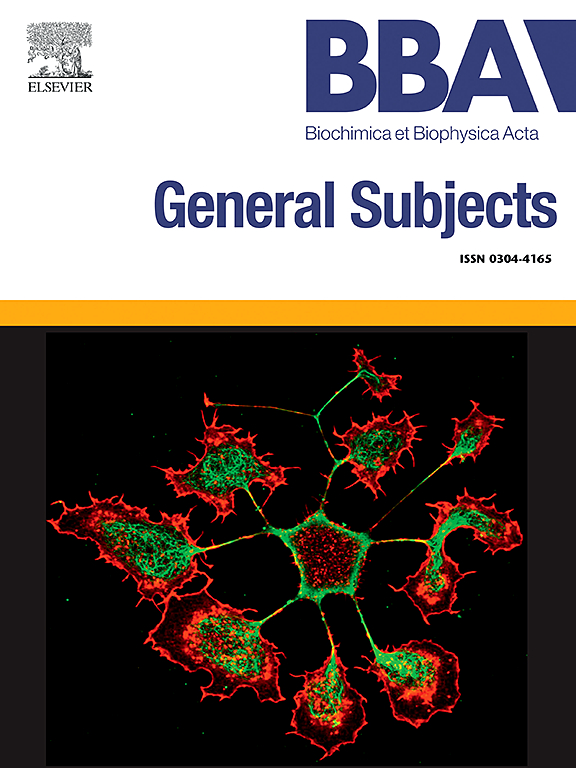Harmonizing time with survival: Circadian rhythm and autophagy in plants
IF 2.2
3区 生物学
Q3 BIOCHEMISTRY & MOLECULAR BIOLOGY
Biochimica et biophysica acta. General subjects
Pub Date : 2025-04-10
DOI:10.1016/j.bbagen.2025.130807
引用次数: 0
Abstract
Background
Circadian rhythm (CR) is a self-sustaining biological oscillation that synchronizes physiological processes with the Earth's 24-h light-dark cycle. In plants, it regulates crucial physiological functions. Autophagy, a conserved degradation mechanism, maintains cellular homeostasis by recycling damaged organelles and proteins. Emerging evidence suggests an interplay between CRs and autophagy, optimizing plant survival and productivity.
Scope
This review explores the molecular mechanisms underlying CR and autophagy, highlighting their roles in growth and stress adaptation. It further examines how circadian clock components regulate autophagy-related genes (ATGs) in response to external cues.
Major conclusions
CR fine-tune autophagy by temporally regulating ATG gene expression. Key transcription factors, including TOC1 and LUX, modulate autophagic activity, ensuring energy conservation. Autophagy reciprocally influences circadian signaling, adjusting metabolic balance under stress.
General significance
Despite extensive research on circadian regulation, a comprehensive understanding of how core clock components orchestrate ATG gene expression remains lacking. Understanding the crosstalk between CR and autophagy provides insights into plant resilience and productivity, potentially informing crop improvement strategies that enhance stress tolerance and resource efficiency. This review aims to bridge this gap by summarizing recent insights and proposing future research directions.
协调时间与生存:植物的昼夜节律和自噬作用
昼夜节律(CR)是一种自我维持的生物振荡,它使生理过程与地球24小时的昼夜循环同步。在植物中,它调节着关键的生理功能。自噬是一种保守的降解机制,通过循环利用受损的细胞器和蛋白质来维持细胞稳态。新出现的证据表明,CRs与自噬之间存在相互作用,优化了植物的生存和生产力。本文探讨了CR和自噬的分子机制,重点介绍了它们在生长和应激适应中的作用。它进一步研究了生物钟组件如何调节自噬相关基因(ATGs)响应外部线索。主要结论scr通过暂时调节ATG基因表达调控自噬。关键转录因子,包括TOC1和LUX,调节自噬活性,确保能量保存。自噬相互影响昼夜节律信号,调节应激下的代谢平衡。尽管对昼夜节律调节进行了广泛的研究,但对核心时钟组件如何协调ATG基因表达的全面理解仍然缺乏。了解CR和自噬之间的相互作用有助于了解植物的抗逆性和生产力,从而为提高作物耐受性和资源效率的作物改良策略提供潜在的信息。这篇综述旨在通过总结最近的见解和提出未来的研究方向来弥合这一差距。
本文章由计算机程序翻译,如有差异,请以英文原文为准。
求助全文
约1分钟内获得全文
求助全文
来源期刊

Biochimica et biophysica acta. General subjects
生物-生化与分子生物学
CiteScore
6.40
自引率
0.00%
发文量
139
审稿时长
30 days
期刊介绍:
BBA General Subjects accepts for submission either original, hypothesis-driven studies or reviews covering subjects in biochemistry and biophysics that are considered to have general interest for a wide audience. Manuscripts with interdisciplinary approaches are especially encouraged.
 求助内容:
求助内容: 应助结果提醒方式:
应助结果提醒方式:


